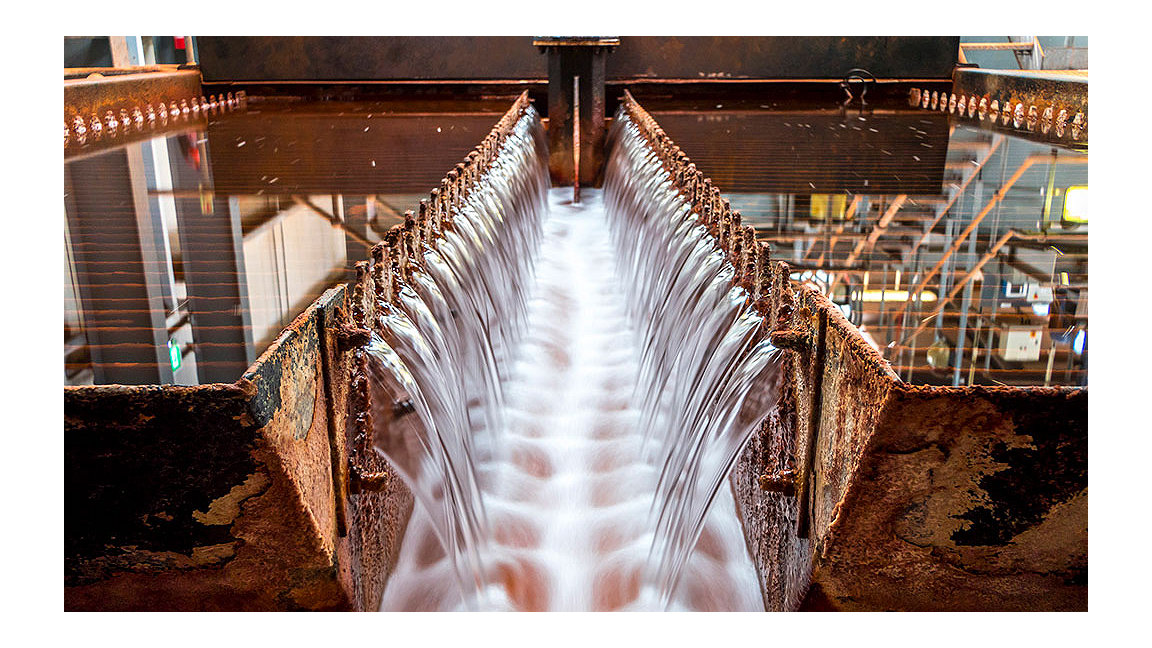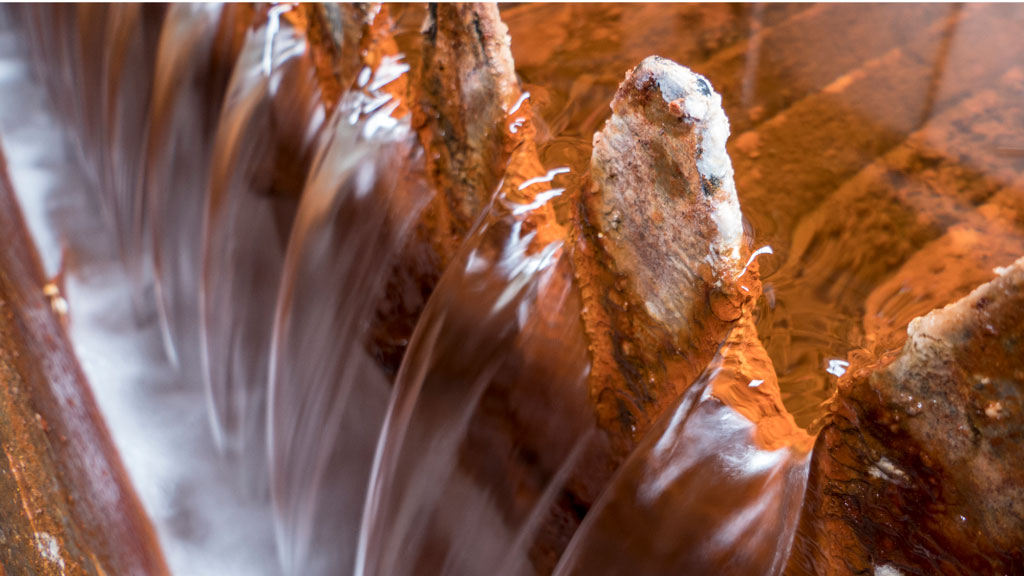
Mine water pumped from the former Dawdon Colliery will be the energy source for a new heat network, © The Coal Authority
Decarbonising heat is a huge challenge to the country – not least because heat demand accounts for 760 TWh which is almost half of the UK’s energy consumption. Currently, most of this is produced by burning gas. The UK has been a net gas importer for more than a decade, which has raised questions about long-term supply security. This is compounded by the fact that peak gas demand of about 200GW is approximately 5 times the peak electricity demand. However, the government has announced that from 2025 no gas connections will be permitted in new-build UK homes. This will require alternative forms of cost effective low-carbon heat sources to be developed.
The Coal Authority, a non-departmental government body sponsored by the Department for Business, Energy and Industrial Strategy, believes it has an innovative solution to this dilemma – using energy from abandoned coal mines to heat homes and businesses, connected by local heat networks.
The UK government recognises the efficiencies of scale that can be achieved by delivering low-carbon heat through networks and has established the Heat Network Development Unit to promote their uptake.
An asset of strategic importance
The UK currently only supplies around 2% of heat through networks, but government estimates show this will need to increase by 2050. The UK’s abandoned mine infrastructure – formerly seen as a liability – would thus become an asset of strategic national importance.
The solution to the UK’s low-carbon heat problem could now come from this seemingly unlikely source. Jeremy Crooks, head of innovation at the Coal Authority, is excited by the future possibilities: "Heat from abandoned coal mines is an innovative and practical solution to one of the big challenges facing the economy – decarbonising heat supplies."
"This is a fantastic opportunity to repurpose the vast network of underground mine workings as a clean, sustainable energy source, attracting investment, creating jobs and tackling climate change, bringing exciting opportunities to communities previously disadvantaged by mine closures."
What does the Coal Authority do?
Established in 1994, the Coal Authority retains responsibility for abandoned coal mines, the last of which closed in 2015. The UK’s intensive deep coal mining industry, spanning more than 300 years, has resulted in extensive abandoned mine workings, found under a quarter of UK homes and businesses.
As mines were abandoned, pumps were switched off and the mines filled with water. In many mines the water becomes contaminated with naturally occurring minerals from the rocks, such as iron, which can impact the ecosystem. Where this comes to the surface, or endangers underground drinking water aquifers, the Coal Authority puts protection measures in place by pumping and treating the mine water.
It protects more than 400km of rivers and aquifers supplying drinking water, handles around 122 billion litres of water per year and operates around 75 mine-water treatment schemes across the UK. The water continuously pumped or draining under gravity from the coalfield is estimated to contain around 100MW of heat, enough to supply up to 15,000 homes.
Harnessing the heat
Water in these mines is heated by geothermal energy produced at the Earth’s core. This mine water has a relatively constant temperature and, as a result, the coefficient of performance of heat pumps using this energy source also remains constant. There is no seasonal variation that would be expected with surface water or air source heat pump systems and generally the temperature is higher leading to higher heat pump efficiency. This consistency and the sheer scale of the abandoned mining infrastructure is key, and sets mine energy apart from other potential low-carbon heat solutions to the UK’s climate challenge.
The heat is accessed by pumping water from a deep seam and using a heat exchanger at the surface to remove around 5°C from the ambient mine water temperature, which is generally between 12 and 20°C. This water is then returned underground to a shallower seam. The heat exchanger then interfaces with a heat pump that will increase the temperature to a more useful 40-60°C, depending on user requirements. The typical ambient mine water temperatures make this heat source very compatible with ambient loop heat networks, where each user has its own heat pump to boost temperatures at point of use. This results in lower system heat losses and means that pipework can be non-metal which makes it cheaper and easier to install.

- district heating schemes
- heated commercial spaces
- indoor horticultural facilities in coalfield areas.
Jeremy Crooks says: "Heat from abandoned coal mines is an innovative and practical solution to one of the big challenges facing the economy – decarbonising heat supplies.
"We have developed various processes and technologies to gain access to and extract this energy, making mine water energy a viable solution when looking to help resolve Britain’s future energy crisis. Coalfield towns and villages, because of their location, are set to be at the forefront of this exciting new technology."
Developing a mine energy project
For development sites in coalfield areas, the first step is to identify the presence of suitable targets in flooded mine workings beneath the site to drill boreholes to access the mine water.
At sites where mine water is already pumped to protect the environment, heat can be extracted from the pumped water before it is treated and discharged at surface.
Seaham Garden village in County Durham is a good example of this and one of the first of its type. It is a planned development of 1,500 homes with construction expected to start in early 2021 that will use mine water pumped from the former Dawdon Colliery as the energy source for a new heat network thereby turning a liability into a valuable asset. At Seaham, one of the main goals is to provide heat to customers at a lower price than gas.
- locally reduced carbon emissions
- no gas boilers in homes
- new business opportunities associated with heat network installation, operation and maintenance.
Benefits for communities
Using former mines as a source of low-cost, low-carbon, clean, sustainable energy could provide substantial wellbeing advantages to the communities of the coalfields. According to a report by Sheffield Hallam University, the employment rate in the coalfields is more than 2 percentage points behind the national average and 5 percentage points behind the rate in South East England. This technology could make coalfield areas more attractive to investors, reviving some areas of the UK by attracting new investment, creating jobs and lowering fuel bills.
Charlotte Adams, commercial manager for mine energy at the Coal Authority, says: "The kind of low-carbon energy technology being proposed at Seaham could help to present coalfield areas as more attractive to investors, which could breathe life back into some areas of the UK where it is most needed.
"This is a fantastic opportunity to repurpose the vast network of underground mine workings as a clean sustainable energy source attracting investment, creating jobs and tackling climate change, bringing exciting opportunities to communities previously disadvantaged by mine closures."
The irony will not be lost on many in these areas – the remnants of an bygone industry which was once the primary source of Britain’s energy for over a century could be giving the coalfield areas a clean, modern, renewable energy future … putting them back at the heart of Britain’s energy production in the process.
"This technology could make coalfield areas more attractive to investors, reviving some areas of the UK by attracting new investment, creating jobs and lowering fuel bills"
